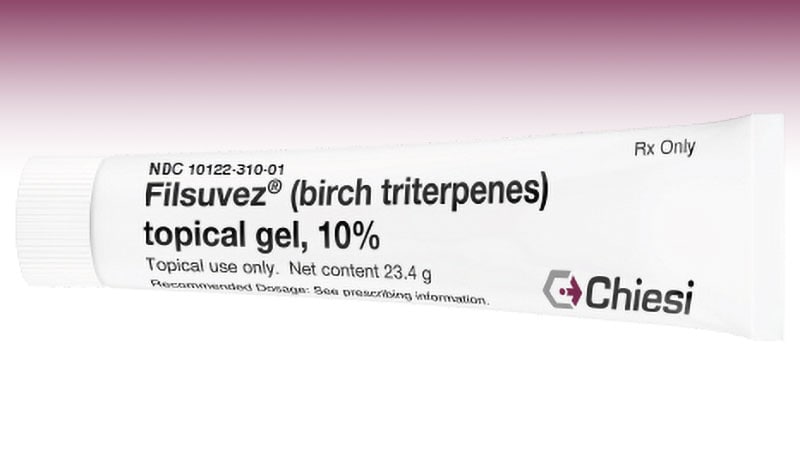TOPLINE:
Long-term treatment with Oleogel-S10 (birch bark extract, Filsuvez) gel significantly reduced wound burden and disease activity in individuals with epidermolysis bullosa (EB), with a high adherence rate and a manageable safety profile over 24 months.
METHODOLOGY:
- In the phase 3 randomized EASE trial, patients with dystrophic and junctional EB (DEB and JEB, respectively) were randomly assigned to receive Oleogel-S10 or control gel for 90 days; 71.7% of patients were aged
- A total of 205 participants, regardless of their initial treatment, entered the open-label phase and received Oleogel-S10 for all partial-thickness EB wounds for 24 months.
- Researchers evaluated long-term outcomes, which included adverse events (AEs) and changes in wound size measured by body surface area percentage (BSAP) and disease activity measured by the EB Disease Activity and Scarring Index (EBDASI) at months 3, 12, and 24 of the open-label phase.
- Measurements at day 90 of the blind phase were considered as baseline for the open-label phase results.
TAKEAWAY:
- The treatment adherence rate was 99.2%, and the mean duration of treatment was 584.7 days.
- AEs, typically mild to moderate, occurred in 77.1% patients; 18.0% and 24.4% of patients experienced severe and serious AEs, respectively. The treatment withdrawal rate because of AEs was 7.8%.
- The body surface area percentage of wounds was reduced by 4.3%, 5.9%, and 3.7% at months 3, 12, and 24, respectively (P P P = .0026, respectively) for patients treated with Oleogel-S10.
- Similarly, those treated with Oleogel-S10 showed significant changes in EBDASI skin activity scores from baseline at months 3 (mean difference [MD], −3.9; P P P = .0068).
IN PRACTICE:
“EASE, the largest study in EB, has demonstrated a favorable safety profile for Oleogel-S10 with long-term treatment. Furthermore, the long-term data from the OLP [open-label phase] has demonstrated a sustained reduction in wound burden over 24 months,” the authors wrote. These findings, they added, are “encouraging given the escalating vicious cycle of wound propagation, healing and reopening leading to fibrosis and SCC [squamous cell carcinoma] in the natural course of this chronic disease.”
SOURCE:
This study was led by Dédée F. Murrell, MD, department of dermatology, St George Hospital, and the University of New South Wales, Sydney, Australia, and was published online on January 16, 2025, in the British Journal of Dermatology.
LIMITATIONS:
Disruptions caused by the COVID-19 pandemic and the inherent challenges of conducting clinical trials on rare diseases with small patient populations could have affected the findings of this study. Some patient-reported outcomes were added after study initiation and not all patients had baseline assessments.
DISCLOSURES:
This study was funded by Amryt Research, subsidiary of Chiesi S.p.A. Murrell disclosed receiving personal and other fees from Chiesi and other pharmaceutical companies and holding a patent for another EB treatment. Two authors were employees of Amryt. Several authors received grants, personal, consulting, and/or research fees from Amryt.
This article was created using several editorial tools, including AI, as part of the process. Human editors reviewed this content before publication.
Source link : https://www.medscape.com/viewarticle/oleogel-s10-shows-sustained-wound-benefits-epidermolysis-2025a10001rz?src=rss
Author :
Publish date : 2025-01-24 08:50:25
Copyright for syndicated content belongs to the linked Source.
